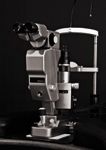Article
Photocoagulator has positive impact on speed, precision
Author(s):
Amarillo, TX-The introduction of a photocoagulator (Pascal [PAttern SCAn Laser Photocoagulator], OptiMedica) has had a positive impact on the speed and precision of the laser procedure, has increased patient comfort, and has changed the treatment approaches to laser photocoagulation, according to J. Edward Ysasaga, MD.

The photocoagulator, which was introduced Jan. 31, 2006, is a pattern scan laser system that treats retinal diseases using a single spot or a predetermined pattern array up to 56 spots, according to the manufacturer, and uses 532-nm laser pulses. The pulses are delivered in a rapid sequence designed to result in improved precision, safety, patient comfort, and a substantial reduction in the time required for treatment that allows multiple laser bursts to be applied in rapid succession. The system offers a choice of various pattern arrays, and the duration of the pulses is shorter than that of conventional photocoagulation. This results in a reduced need for treatment sessions and retrobulbar blocks or other preoperative medication.

"The idea of the availability of patterns was intriguing, and we liked the idea of enhanced precision," he said. "Reduced pain for the patient is always an attractive factor, and increased speed is a boon to a busy clinic."
The deciding point was the "wow factor," Dr. Ysasaga said. "Laser is fun again.
"The patterns were very impressive, and test driving the laser was the key to our decision to purchase it," he said.
Drs. Ysasaga and Aragon began using the laser in June and to date have performed more than 500 procedures, with the laser becoming a fast favorite in their clinic, he said. Initially, they performed mostly panretinal photocoagulation, but now focal coagulation is being performed frequently.
Each of the advantages described by Dr. Ysasaga has had a real impact on their practice, he said.
"The learning curve associated with the laser affects the true speed. The staff has to learn a new laser and adjustments," he said. "With some practice, however, the laser proves to be about four times faster than other lasers."
Also, he said, patient cooperation is improved because patients experience less pain.
"The absence of the need for pain medications or blocks speeds the procedure," he said. "All of this results in shorter laser clinics, with extra time for patients who need to be worked into the schedule."
Patient comfort is increased, because each burn is delivered rapidly and for a shorter duration, which minimizes choroidal penetration, he added.
The instrument's precision, Dr. Ysasaga said, provides a very uniform burn quality and uniform spacing, with potentially less "laser creep" of the retinal pigment epithelium over time. The end result of treatment, he said, is a very professional laser appearance with a uniform adjustable level of effect.
"The primary complaint that the patients have is the bright light during the pattern scan," Dr. Ysasaga noted. "The use of smaller spots and patterns is better for patients who are light sensitive. The happier patients are not afraid to return for additional treatments."
The photocoagulator also facilitates new approaches to treatment, he said.
Newsletter
Don’t miss out—get Ophthalmology Times updates on the latest clinical advancements and expert interviews, straight to your inbox.




